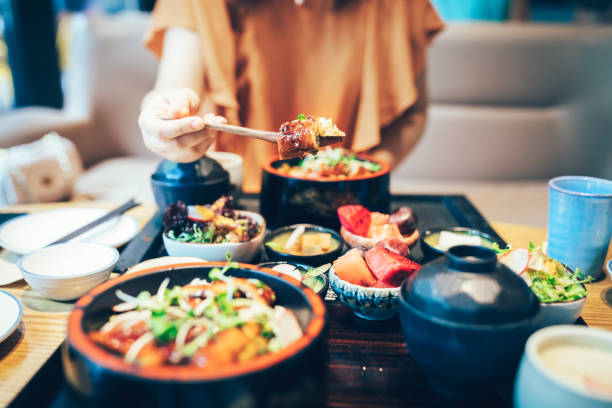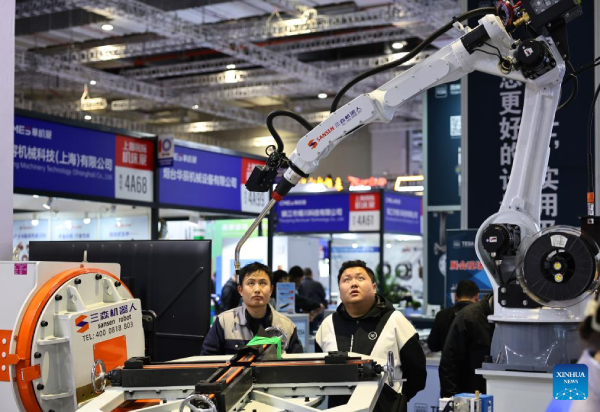Chinese cuisine has transcended its geographical boundaries to become a global phenomenon, dominating menus in top hotels and tourist resorts around the world.[9, 10] Its adaptability and innovation have made it an integral part of the cultural fabric of many countries, with its influence reflected in familiar dishes across every continent.[4, 2] This widespread presence not only showcases the appeal of Chinese flavors but also highlights the central role that food plays in Chinese culture and society.
Global Influence and Cultural Adaptation
Chinese migration throughout history has been a major factor in the global spread of Chinese cuisine. As Chinese immigrants settled in new countries, they adapted their traditional recipes to local tastes and ingredients, resulting in entirely new “Chinese” dishes that have become part of local cuisines.[4, 11]
Japan (Ramen): The origins of ramen, the beloved noodle soup, trace back to Chinese immigrants in Japan during the 19th and 20th centuries. The first ramen shop opened in Tokyo in 1910, where a Japanese owner hired Cantonese chefs to prepare and serve the dish. After World War II, with rice shortages and the availability of American wheat flour, ramen flourished as a popular food in casual eateries, becoming a staple of Japanese cuisine.
India (Gobi Manchurian): Gobi Manchurian, a dish of deep-fried cauliflower in a soy-based sauce, exemplifies Indo-Chinese cuisine. Despite its name, the dish has no connection to the Manchurian region; it was created by Chinese restaurateurs in India.
Australia (Dim Sim): Dim sim is an Australian version of dumplings and a popular snack. Typically made with minced meat, cabbage, and spices wrapped in a thick skin, it is steamed or deep-fried. It originated from the Cantonese community in Melbourne.
American-Chinese Dishes: Many globally recognized “Chinese” dishes were actually developed in the United States and bear little resemblance to traditional Chinese fare. Examples include General Tso’s Chicken and fortune cookies. These dishes are often “milder, thicker, and sweeter” to suit American tastes and use different ingredients, such as Western broccoli instead of Chinese varieties.
Food in Chinese Culture and Society
In China, food is more than sustenance; it is a powerful means of social interaction, a tool for bonding, and an expression of etiquette.
Social Bonding: Food is central to family gatherings, business meetings, and social events. Sharing a meal is seen as an intimate act that fosters trust, respect, and friendship. The Chinese term tuan yuan (团圆), meaning “reunion,” underscores the cultural importance of eating together as a family.
Symbolism: Many Chinese foods carry deep symbolic meanings, especially during festivals and celebrations.
Dumplings (饺子): Symbolize wealth and prosperity; commonly eaten during the Chinese New Year.
Noodles (面条): Represent longevity and prosperity; often served uncut to signify a long life.
Fish (鱼, yu): The word yu sounds like “surplus” or “abundance,” so serving a whole fish symbolizes hopes for abundance in the new year.
Spring Rolls (春卷): Their golden color and cylindrical shape resemble gold bars, symbolizing wealth.
Table Etiquette: Dining etiquette is highly important in Chinese culture.
Chopsticks: Proper use is essential. Avoid sticking them upright in rice, as this resembles incense sticks used in funerals. Also avoid playing with them, licking them, using them to stir food, or pointing them at others.
Respect: Wait for the host or elders to begin eating first.
Sharing: Meals are typically served family-style with shared dishes. Avoid hoarding food or taking the last piece unless offered by the host. Leaving a portion of each dish shows that the host has provided enough.
Tea Service: It is customary to never leave a tea cup empty.[12] The person nearest the teapot should serve others first, starting with the most senior guest, before refilling their own cup. Tapping fingers lightly on the table is a sign of gratitude for the tea, replacing the need to say “thank you” each time.
Pointing: Pointing with fingers is considered rude in many cultures, including China. Use the whole hand to gesture.
Fish and Bones: Fish is often served whole, and it is customary not to flip the fish over. Spitting out bones onto the plate is preferred over using hands or chopsticks.
Modern Trends in the Chinese Food Industry
China’s food industry is undergoing significant transformations driven by changing consumer lifestyles, increased health awareness, and technological advancement.
Convenience and E-Commerce: With ongoing urbanization, demand for ready-to-eat meals and innovative packaging solutions is rising. Online sales dominate, with platforms like Tmall and JD.com fueling major growth in snack sales.
Health and Wellness: Chinese consumers are increasingly health-conscious, driving demand for functional foods and beverages that promote overall wellness, particularly those enriched with nutrients or probiotics. There is also a growing preference for products free from artificial ingredients and preservatives, along with rising interest in plant-based options, including meat and dairy alternatives.
Sustainability and Eco-Friendly Practices: Consumers are increasingly favoring brands that prioritize eco-friendly practices, including sustainable packaging and responsible sourcing. Around 66% of consumers are willing to pay a premium for sustainable products.
Dining Experiences and Out-of-Home Consumption: Spending on dining out is expected to rise, especially during holidays.
Fusion Cuisine: Fusion cuisine is gaining popularity, with consumers seeking adventurous dining experiences and unique flavor combinations. Chefs in China are blending Western techniques with traditional dishes such as Peking Duck, and offering dim sum filled with foie gras or truffles.
Tradition Meets Modernity: There is a trend of reviving traditional ingredients with modern twists, appealing to consumers who value authenticity.
Food Safety: Despite historical challenges, the Chinese government is addressing food safety concerns through new regulations and the integration of technology in agriculture.
Conclusion
Chinese food is a global cultural and economic force that extends beyond taste to encompass history, philosophy, and social bonding. From its ancient roots and deeply rooted traditions to its ability to adapt and innovate in response to changing global preferences, Chinese cuisine continues to affirm its status as one of the most dynamic and influential in the world. Whether through traditional dishes served during New Year celebrations or modern innovations that blend global flavors, Chinese food invites all to immerse themselves in a rich and ever-evolving culture.








